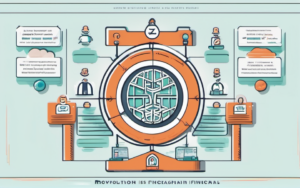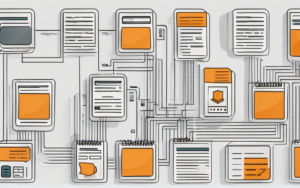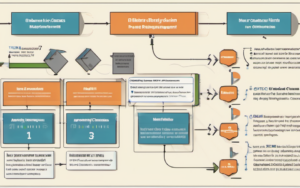Blockchain uses are rapidly expanding beyond the realm of cryptocurrencies. While Bitcoin and Ethereum have brought blockchain technology to the forefront, its potential extends far beyond digital currencies. This exploration delves into some of the weirdest and most unexpected applications of this transformative technology, showcasing its versatility and power across diverse industries.
1. Beyond Crypto: Unveiling Unexpected Blockchain Applications
Blockchain technology, at its core, is a decentralized, immutable ledger. This fundamental characteristic underpins its utility in a vast array of applications. Initially conceived as a foundation for cryptocurrencies, its potential has since been recognized across numerous sectors.
Its decentralized nature eliminates the need for intermediaries, fostering trust and transparency in previously opaque systems. This inherent trust mechanism is what makes blockchain truly revolutionary. The immutability of the blockchain ensures data integrity, preventing unauthorized alterations or deletions, a crucial feature for applications requiring high security and reliability.
1.1. The Evolution of Blockchain Technology
The evolution of blockchain technology is a fascinating journey, starting with its inception as the underlying technology for Bitcoin. Initially viewed with skepticism, it has rapidly matured, expanding its capabilities and applications beyond the initial cryptocurrency focus. We’ve seen improvements in scalability, interoperability, and security, paving the way for broader adoption across diverse sectors. The development of smart contracts, self-executing contracts with the terms of the agreement between buyer and seller being directly written into lines of code, has further expanded the potential of blockchain technology. This has led to innovative applications such as supply chain management, decentralized finance (DeFi), and digital identity verification.
1.2. Moving Beyond Cryptocurrency: Exploring Diverse Use Cases
Moving beyond the initial association with cryptocurrencies, blockchain has found innovative uses in areas like supply chain management, healthcare, and even voting systems. Its ability to provide secure and transparent record-keeping is transforming industries that previously lacked trust and efficiency. We’re now seeing its impact on everything from tracking the provenance of luxury goods to securing patient medical records, demonstrating its impressive versatility and potential to disrupt existing systems. The surprising ways blockchain is used today underscore its adaptability and potential for innovation. Creative blockchain implementations beyond crypto are constantly emerging, pushing the boundaries of what’s possible.
2. Supply Chain Transparency and Traceability
The ability to track goods from origin to consumer is revolutionizing supply chains. Blockchain provides an immutable record of every step in the process, from raw material sourcing to final delivery.
This transparency builds trust between businesses and consumers, ensuring product authenticity and ethical sourcing practices. For example, a coffee company can use blockchain to track its beans from the farm to the cup, verifying fair trade practices and environmental sustainability. This offers consumers assurance and allows them to make informed purchasing decisions.
2.1. Tracking Goods from Origin to Consumer
Imagine being able to scan a QR code on a product and see its entire journey, from the farm where it was grown to the store where it’s sold. That’s the power of blockchain in supply chain management. Every transaction, every location, every handling step is recorded on the blockchain, creating a complete and verifiable history. This level of transparency helps combat counterfeiting and ensures product quality.
2.2. Combating Counterfeiting and Fraud
Counterfeiting is a major problem across many industries, costing billions of dollars annually. Blockchain technology helps to tackle this issue by providing a secure and verifiable record of a product’s authenticity. By tracking products throughout their supply chain, blockchain makes it extremely difficult to counterfeit goods. This is especially beneficial for luxury goods, pharmaceuticals, and other high-value products prone to counterfeiting.
2.3. Improving Efficiency and Reducing Waste
The increased transparency and traceability offered by blockchain also contribute to greater efficiency and reduced waste in supply chains. By providing real-time visibility into inventory levels and logistics, companies can optimize their operations, reducing delays and improving overall efficiency. This also helps to minimize waste by reducing the risk of spoilage and obsolescence.
3. Digital Identity and Self-Sovereign Identity (SSI)
Blockchain technology is playing a crucial role in reshaping digital identity management. The ability to securely store and manage personal data empowers individuals with greater control over their information.
This approach, often referred to as Self-Sovereign Identity (SSI), shifts the power from centralized authorities to individuals. Individuals have the ability to control what data they share and with whom, enhancing privacy and security. This is a significant step toward greater individual autonomy in the digital age.
3.1. Securing Personal Data with Blockchain
With data breaches becoming increasingly common, securing personal information is paramount. Blockchain’s decentralized and immutable nature provides a robust solution. Personal data can be stored securely on the blockchain, encrypted and only accessible with the individual’s permission. This eliminates the risk of data breaches and unauthorized access.
3.2. Empowering Individuals with Control Over Their Information
SSI puts individuals in control of their digital identities. Instead of relying on centralized databases controlled by governments or corporations, individuals can manage their own data, deciding what information to share and with whom. This approach promotes greater transparency and accountability.
3.3. Streamlining Identity Verification Processes
Blockchain technology can streamline identity verification processes. By using blockchain-based digital identities, individuals can quickly and securely verify their identity to various services and organizations, reducing the need for cumbersome paperwork and manual verification. This simplifies access to services and reduces administrative overhead.
4. Healthcare and Medical Data Management
The healthcare industry is ripe for disruption with blockchain’s potential to revolutionize data management. Securely storing and sharing patient records is paramount in healthcare, and blockchain’s capabilities offer a solution to existing challenges.
Improving data privacy and interoperability are key benefits, enabling seamless information sharing between healthcare providers while maintaining patient confidentiality. This also facilitates clinical trials and research by providing a secure and transparent platform for data collection and analysis.
4.1. Securely Storing and Sharing Patient Records
Patient medical records can be stored securely on a blockchain, accessible only to authorized healthcare providers with the patient’s consent. This enhances patient privacy and data security while facilitating seamless information sharing among healthcare providers.
4.2. Improving Data Privacy and Interoperability
Blockchain improves data privacy by ensuring that only authorized individuals can access patient records. It also enhances interoperability by enabling seamless data exchange between different healthcare systems, improving care coordination and reducing medical errors.
4.3. Facilitating Clinical Trials and Research
Blockchain can streamline clinical trials by securely storing and managing patient data, ensuring data integrity and transparency. This facilitates collaboration among researchers and accelerates the development of new treatments and cures.
5. Voting and Governance: Ensuring Transparency and Security
Blockchain-based voting systems offer a path towards more transparent and secure elections. The immutability of the blockchain ensures that votes are not tampered with, enhancing election integrity.
This system also improves governance and decision-making processes by providing a secure and transparent platform for recording and tracking votes. This level of transparency builds trust in the electoral process and fosters greater participation.
5.1. Blockchain-Based Voting Systems
Blockchain technology offers a secure and transparent way to conduct elections. Votes are recorded on the blockchain, making it virtually impossible to alter or manipulate them. This enhances the integrity of the electoral process and builds trust in the results.
5.2. Enhancing Election Integrity and Preventing Fraud
The immutability of the blockchain makes it extremely difficult to commit voter fraud. Each vote is recorded securely and transparently, making it easy to audit and verify the results. This increases confidence in the electoral system and reduces the risk of disputes.
5.3. Improving Governance and Decision-Making Processes
Blockchain can be used to improve governance and decision-making processes in various organizations, from corporations to governments. By providing a transparent and secure platform for recording votes and decisions, blockchain enhances accountability and transparency.
6. The Metaverse and NFTs: Unexpected Applications
The metaverse and NFTs (non-fungible tokens) are two emerging areas where blockchain is playing an increasingly important role. NFTs leverage blockchain technology to create unique digital assets that can be traded and owned.
Blockchain’s role in metaverse development is crucial in creating secure and transparent digital economies within virtual worlds. This creates new economic models in virtual worlds, allowing for the creation of decentralized marketplaces and digital ownership.
6.1. NFTs and Digital Ownership
NFTs use blockchain to create unique digital assets, allowing for true ownership and verification of digital items. This is transforming the way we think about digital art, collectibles, and virtual goods.
6.2. Blockchain’s Role in Metaverse Development
Blockchain is crucial for building secure and transparent digital economies within the metaverse. It enables secure transactions, digital asset management, and the creation of decentralized platforms.
6.3. Creating New Economic Models in Virtual Worlds
Blockchain is creating new economic models within virtual worlds, allowing for the creation of decentralized marketplaces and the monetization of digital assets. This fosters innovation and the emergence of new economic opportunities.
7. Environmental Conservation and Sustainability
Blockchain technology is also being used to promote environmental conservation and sustainability. Tracking carbon emissions and environmental impact are key areas where blockchain can make a significant contribution.
Protecting endangered species and wildlife, promoting sustainable practices, and improving transparency are also facilitated by blockchain’s capabilities. This empowers organizations and individuals to track, monitor, and verify their environmental impact.
7.1. Tracking Carbon Emissions and Environmental Impact
Blockchain can be used to track carbon emissions and environmental impact throughout supply chains and various industries. This transparency fosters accountability and enables businesses to make more sustainable choices.
7.2. Protecting Endangered Species and Wildlife
Blockchain technology can be used to track and monitor endangered species and wildlife populations, providing valuable data for conservation efforts. This helps to combat illegal wildlife trade and poaching.
7.3. Promoting Sustainable Practices and Transparency
Blockchain fosters transparency and accountability in sustainable practices, enabling businesses and consumers to verify the sustainability claims made by companies. This increases consumer trust and promotes responsible sourcing.
8. The Future of Blockchain: Emerging Trends and Possibilities
The future of blockchain is bright, with ongoing developments in scalability and interoperability paving the way for even wider adoption. Addressing these challenges is crucial for realizing the technology’s full potential.
Exploring new use cases and innovations is an ongoing process, with researchers and developers constantly discovering new ways to leverage blockchain’s unique capabilities. The potential for disruptive change across various industries is immense.
8.1. Addressing Scalability and Interoperability Challenges
Improving scalability and interoperability are key challenges for blockchain technology. Researchers are actively working on solutions such as layer-2 scaling and cross-chain communication to overcome these limitations and enable broader adoption.
8.2. Exploring New Use Cases and Innovations
The potential applications of blockchain technology are vast and constantly expanding. Researchers and developers are continuously exploring new use cases and innovations, pushing the boundaries of what’s possible.
8.3. The Potential for Disruptive Change Across Industries
Blockchain technology has the potential to disrupt various industries by increasing transparency, security, and efficiency. This disruptive potential offers exciting possibilities for innovation and improvement across numerous sectors.
The expanding reach of blockchain technology is truly remarkable. From revolutionizing supply chains to securing healthcare data and even reshaping the way we vote, blockchain’s impact is undeniable. The continued development and adoption of this technology promise even more unexpected and transformative applications in the years to come, making it a technology to watch closely.




